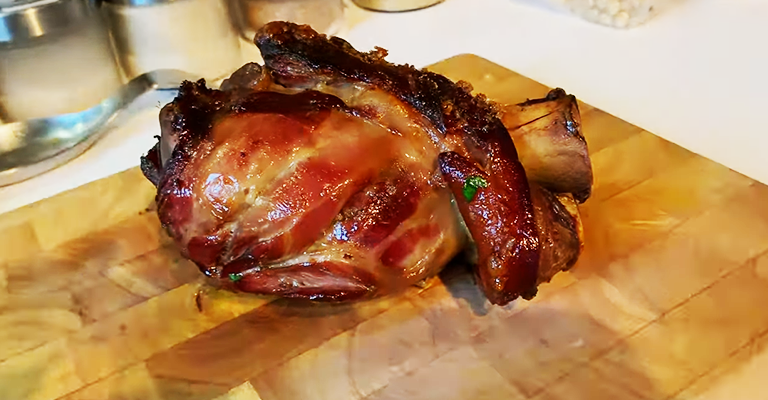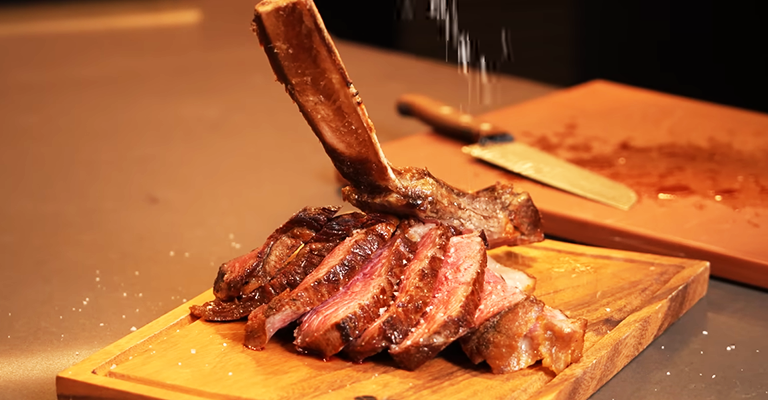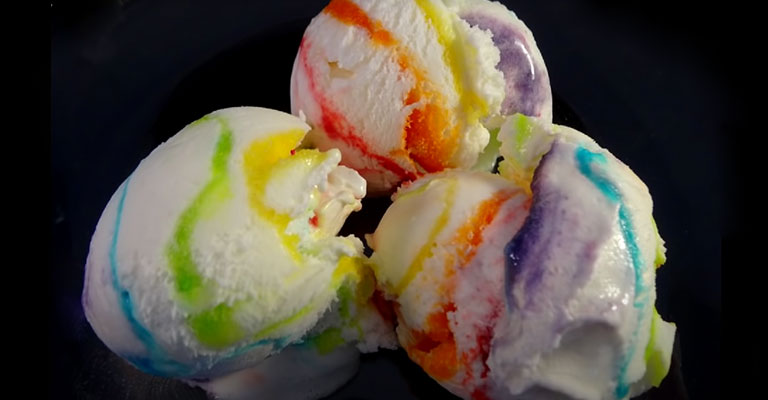Why Are My Chia Seeds Not Swelling? -Explore 11 Hidden Reasons
Chia seeds, revered for their nutritional prowess, are known for their remarkable ability to transform into a gel-like consistency when combined with liquid. However, encountering difficulties in achieving this swelling phenomenon is not uncommon.
Several factors can influence the effectiveness of this process, prompting the question: “Why are my chia seeds not swelling?” From the proportion of seeds to liquid, to the temperature of the water used, a multitude of elements come into play.
In this exploration, we delve into the possible reasons behind chia seeds failing to swell and offer practical solutions to ensure their optimal absorption, allowing you to harness their full potential.

Why Are My Chia Seeds Not Swelling? 11 Reasons
When your chia seeds are not swelling as expected, there could be several reasons behind it. Chia seeds are known for their high fiber and omega-3 fatty acid content, and they have a unique ability to absorb liquid and form a gel-like consistency.
However, various factors can affect this process. Here are some possible reasons why your chia seeds may not be swelling:
1. Insufficient Liquid
Chia seeds are hydrophilic, meaning they love water. If there isn’t enough liquid in your mixture, the seeds won’t have ample moisture to absorb and swell.
Ensure you’re using an adequate amount of liquid to allow the seeds to expand properly. If your mixture seems too dry, try adding a bit more liquid gradually.
2. Improper Ratio of Chia Seeds to Liquid
Achieving the right balance of chia seeds to liquid is crucial. Using too many chia seeds in comparison to the liquid can lead to a dense, clumpy mixture rather than a gel-like consistency.
Stick to the recommended ratio of about 1 tablespoon of chia seeds to 2.5 to 3 tablespoons of liquid for optimal results.
3. Not Allowing Enough Time
Patience is key when it comes to chia seeds. These tiny seeds need time to absorb the liquid and swell.
A waiting period of at least 10-15 minutes is advised, but leaving them for longer can yield even better results. Consider preparing your chia mixture ahead of time to allow for ample soaking.
4. Agitating the Mixture Too Soon
While it might be tempting to stir or shake your chia mixture immediately, it’s best to exercise restraint.
Vigorous agitation too early in the process can disrupt the absorption of liquid and hinder the seeds’ ability to swell. Let them sit undisturbed for the initial soaking period.
5. Using Hot or Boiling Liquid
Exposing chia seeds to extremely hot or boiling liquid can inhibit their ability to absorb moisture.
Opt for cool or room-temperature liquids to create an environment conducive to swelling. This ensures that the seeds can absorb the liquid gradually and effectively.
6. Low-Quality Chia Seeds
The quality of chia seeds can vary based on factors such as freshness and storage conditions. Older or lower-quality seeds may not have the same swelling properties as fresh, high-quality ones.
Consider sourcing your chia seeds from reputable suppliers to ensure you’re getting a premium product.
7. Storing Chia Seeds Incorrectly
Proper storage is essential to maintain the quality of chia seeds. Exposure to heat, light, or moisture can degrade their texture and affect their ability to absorb liquid.
Store your chia seeds in an airtight container in a cool, dry place to preserve their freshness and swelling potential.
8. Hard Water
Water with a high mineral content, known as hard water, can sometimes interfere with the absorption process of chia seeds.
When you suspect this might be a factor, consider using filtered or distilled water in your chia recipes to optimize their ability to swell.
9. Using Thickening Agents or Additives
Adding ingredients like thickeners, gums, or certain types of sweeteners can interfere with the swelling process of chia seeds.
10. Medical Conditions or Medications
Certain medical conditions or medications can affect how your body processes and absorbs nutrients, including chia seeds.
11. Inconsistent Seed Variety
Different varieties of chia seeds may have slightly different swelling properties. It’s possible that a change in the brand or source of your chia seeds could lead to differences in swelling behavior.
Troubleshooting for Better Chia Seed Swelling
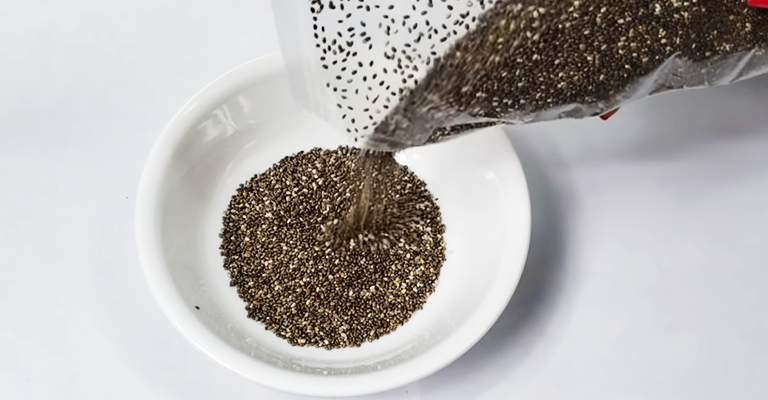
Chia seeds are renowned for their ability to absorb liquid and form a gel-like consistency, making them a versatile and nutritious addition to various dishes. However, achieving optimal chia seed swelling can sometimes be a bit tricky.
Here are some troubleshooting tips to help you get the best results:
Insufficient Swelling
- Cause: Not enough liquid was used.
- Solution: Increase the amount of liquid in your chia seed mixture. The ideal ratio is about 1 tablespoon of chia seeds to 2.5 to 3 tablespoons of liquid.
Clumpy or Thick Texture
- Cause: Too many chia seeds were used in proportion to the liquid.
- Solution: Adjust the ratio by using fewer chia seeds or increasing the amount of liquid in your recipe.
Chia Seeds Remain Hard
- Cause: Not enough time was given for the seeds to absorb the liquid.
- Solution: Allow the chia seeds to soak for at least 10-15 minutes, or even longer, to ensure they fully absorb the liquid.
Mixture is Watery
- Cause: Using too much liquid for the amount of chia seeds.
- Solution: Add more chia seeds to the mixture and let them soak for additional time.
Seeds Settle at the Bottom
- Cause: Not mixing the seeds and liquid thoroughly.
- Solution: Stir the mixture well initially and then give it a stir every few minutes to prevent settling.
Chia Seeds Form Clumps
- Cause: Agitating the mixture too soon or too vigorously.
- Solution: Let the mixture sit undisturbed for the first few minutes, then gently stir to ensure even absorption.
Bitter Taste
- Cause: Low-quality or rancid chia seeds.
- Solution: Use fresh, high-quality chia seeds from a reputable source.
Chia Seeds Float on the Surface
- Cause: The chia seeds were not mixed properly with the liquid.
- Solution: Stir the mixture thoroughly to ensure the chia seeds are evenly distributed.
Using Boiling Water
- Cause: Liquid was too hot, inhibiting absorption.
- Solution: Use cool or room-temperature liquids to allow for gradual absorption.
Inconsistent Texture
- Cause: Uneven mixing or adding ingredients like thickeners or sweeteners.
- Solution: Ensure thorough mixing and avoid adding ingredients that can interfere with absorption.
Tips for Ensuring Proper Chia Seed Swelling
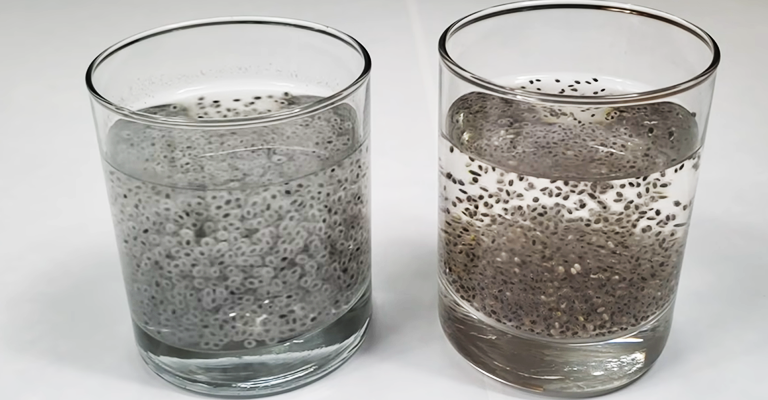
Chia seeds are a versatile and nutrient-rich addition to many dishes. To make the most of their unique properties, it’s important to ensure they swell properly.
Here are some tips to achieve the desired gel-like consistency and unlock the full potential of these tiny powerhouses.
Use Adequate Liquid
The foundation of successful chia seed swelling lies in having enough liquid.
Ensure you’re using the right amount of liquid for the quantity of chia seeds you’re incorporating. This balance creates the ideal environment for absorption.
Maintain the Correct Seed-to-Liquid Ratio
Striking the right balance between chia seeds and liquid is crucial. Too many seeds relative to the liquid can lead to a thick, clumpy mixture.
Aim for about 1 tablespoon of chia seeds to 2.5 to 3 tablespoons of liquid for optimal results.
Exercise Patience
Chia seeds need time to absorb the liquid and swell. Allow them at least 10-15 minutes for this process. If possible, leave them for longer to ensure thorough absorption.
Avoid Agitating Too Soon
Resist the temptation to stir or shake the mixture vigorously immediately after combining the seeds and liquid.
Premature agitation can disrupt the absorption process. Let the mixture rest for a few minutes before gently stirring.
Opt for Cool or Room Temperature Liquids
Extremely hot or boiling liquid can hinder the absorption of chia seeds. To promote optimal swelling, use cool or room-temperature liquids to create an environment conducive to absorption.
Select High-Quality Chia Seeds
The quality of chia seeds can significantly impact their swelling capacity. Opt for fresh, high-quality seeds from reputable sources to ensure optimal results.
Proper Storage is Key
Protect the integrity of your chia seeds by storing them in a cool, dry place away from direct sunlight and moisture. Improper storage conditions can affect their ability to absorb liquid effectively.
Thoroughly Mix Seeds and Liquid
To achieve even absorption, make sure to mix the chia seeds and liquid thoroughly. Avoid clumps by ensuring an even distribution.
Avoid Thickening Agents or Additives
Adding ingredients like thickeners, gums, or certain sweeteners can interfere with the swelling process. Stick to simple mixtures for the best results.
FAQs
Why Aren’t My Chia Seeds Swelling?
Chia seeds might not be swelling due to factors like insufficient liquid, improper seed-to-liquid ratio, or impatience.
Can Using Hot Water Affect Chia Seed Swelling?
Yes, using extremely hot or boiling water can hinder chia seed absorption. It’s recommended to use cool or room-temperature liquids.
What’s the Ideal Chia Seed-to-Liquid Ratio for Swelling?
A good rule of thumb is about 1 tablespoon of chia seeds to 2.5 to 3 tablespoons of liquid.
Are There Quality Differences in Chia Seeds That Affect Swelling?
Yes, the quality of chia seeds can vary. Older or lower-quality seeds may not swell as well as fresh, high-quality ones.
Can Adding Thickeners or Sweeteners Affect Chia Seed Swelling?
Yes, adding ingredients like thickeners, gums, or certain sweeteners can interfere with the swelling process.
To Recap
The proper swelling of chia seeds is a delicate balance of factors. From ensuring adequate liquid to maintaining the right seed-to-liquid ratio, each element plays a crucial role.
Patience is key; allowing chia seeds ample time to absorb liquid leads to the desired gel-like texture. Avoiding premature agitation and using cool or room-temperature liquids further promote optimal swelling.
Quality matters, as fresher, high-quality seeds tend to perform better. Lastly, steering clear of additives like thickeners and sweeteners can prevent interference with the absorption process.
By attending to these considerations, you’ll unlock the full potential of these nutritional powerhouses in your culinary endeavors.
